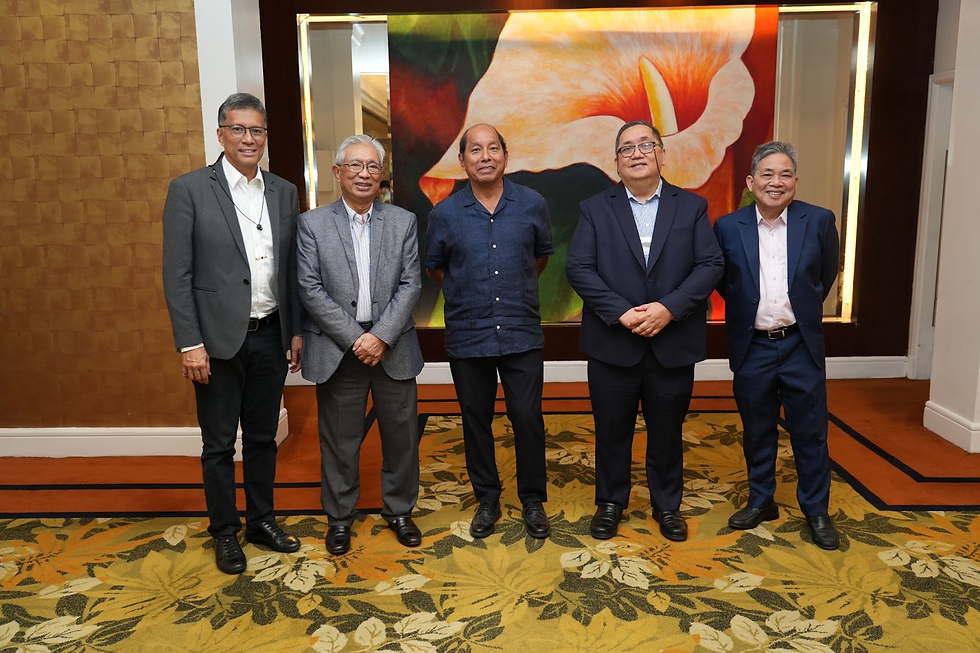TRABAHO: SETTING FREE AN URGENT REFORM
- Action for Economic Reforms
- Oct 10, 2018
- 4 min read
YELLOW PAD
By Jenina Joy Chavez
The House of Representatives passed the Tax Reform for Attracting Better and High-Quality Opportunities or TRABAHO Bill in early September. The first major component of TRABAHO is the reduction of the corporate income tax (CIT) rate to 20% over a period of nine years, starting 2021.
The Philippines imposes the highest CIT rate in ASEAN at 30%, compared to an average of 21.5% in the nine other ASEAN countries. The reality of tax competition makes the country less attractive, and the rate reduction under TRABAHO is a welcome move.
Our experience in the past fifteen years shows increasing tax effort in times of increasing rates, e.g. 2005-2008 when CIT was increased from 32% to 35%; and a long lag before tax effort could recover after a rate cut, e.g. four years after CIT was brought down to 32% in 2009. A cut of one percent now means P26 billion in revenue loss.
To cushion the expected revenue loss, the start of the CIT reduction is delayed and its implementation is made on a staggered basis. A further tweak that can be introduced is the requirement of a review of the overall fiscal position before further cuts beyond 25% can be made. This is to check whether tax effort is improving and to ensure that we have the fiscal space to pursue further cuts.
The second major component of TRABAHO is to rationalize and modernize the fiscal incentives granted by government. It expands the menu of incentives, enhances tax administration, and makes the award of incentives contingent on performance and inclusion in a set of strategic priority sectors.
As with the CIT rate reduction, there is wide support for the improved list of incentives, which now includes expanded tax deductibility for research and development, training, incremental labor expenses, and reinvestment allowance for manufacturing, among others.
However, groups representing exporters, foreign chambers, and the IT-BPO (information technology and business process outsourcing) sector and economic zone locators would rather have the fiscal incentive rationalization (FIR) not apply to them. They raise the specter of job losses and investor flight resulting from FIR.
Specifically, they oppose the sunset provision of FIR. With the sunset provision, incentives only the IT-BPO sector and economic zone locators currently enjoy in perpetuity will now have an expiry. They will lose the special tax rate of 5% on gross income earned (GIE) granted to locators in the Philippine Economic Zone Authority (PEZA) and other special economic zones. Together with this comes the fear of PEZA losing its “one-stop shop” authority, which will lengthen transaction time and expose investors to the whims of local government units (LGUs). A related concern is the higher 90% threshold required for exporters to automatically be given value-added tax (VAT) exemption on imports and zero-rating on domestic purchases.
It is possible to address these concerns. There can be a longer transition period for those enjoying the GIE privileges before they graduate to the regular CIT rates, and even a longer maximum period for the enjoyment of the new incentives. If these investors keep on innovating and qualifying in the strategic investments priorities program, it is possible for them to keep on enjoying these new incentives.
As per the current Bill, PEZA does not lose its authority, except for the final approval of the award of incentives. This is in line with harmonizing all incentives laws and centralizing their administration. PEZA may, and in fact should, continue to shield investors by covering and processing all LGU requirements.
The VAT treatment of investors falling below the 90% threshold causes worry because of the tedious and lengthy refund process. Improving the refund process will go a long way, as will cooperation to arrest anomalies in the issuance of tax credit certificates.
With respect to the issue of job losses and investor jitters, the point is that FIR does away with redundant incentives. In other words, firms that are already profitable can perform well without incentives. Further, the reform mandates the appropriation of P45 billion for a five-year Structural Adjustment Fund to cover targeted cash grants and trainings for displaced workers of affected firms, skills upgrading of IT-BPO industry workers, and the development of infrastructure and economic activities in and around special economic zones.
Thus, there are ways to address the most pressing concerns. It is just a matter of stakeholders coming together and finding the sweet spot. At no other time in history have the Department of Finance and the Department of Trade and Industry worked closely together, which should give comfort to industry and fiscal reformers alike.
The TRABAHO Bill is now in the Senate for deliberation, and as expected, the same issues brought up in the House of Representatives are again being raised. Must a needed reform be held hostage on account of a few contentious provisions?
The sooner an agreement is reached on how best to resolve conflicting concerns in the TRABAHO Bill, the better it is for everyone. Aside from setting free a much-needed reform, it will end the creeping uncertainty affecting investment decisions. Investors need to know when and how the reform will take place, so they are able to make proper calculations.
Reform should not be a zero-sum game. It is most stable when supported by a broad consensus. The challenge is striking an acceptable balance among the concerns raised by various stakeholders. If indeed, as everyone claims, the objective is to enhance the country’s competitiveness and promote its development, it should be possible to work out this balance.
Jenina Joy Chavez is a trustee of Action for Economic Reforms (www.aer.ph), and heads its industrial policy program.



